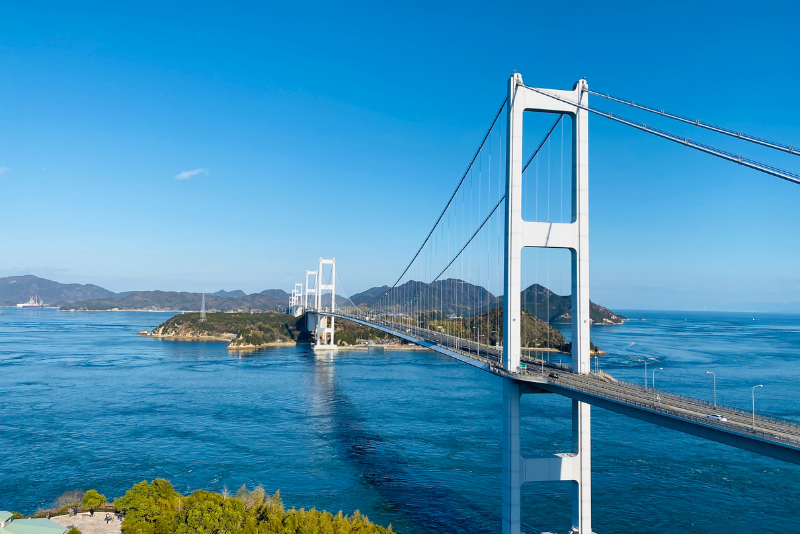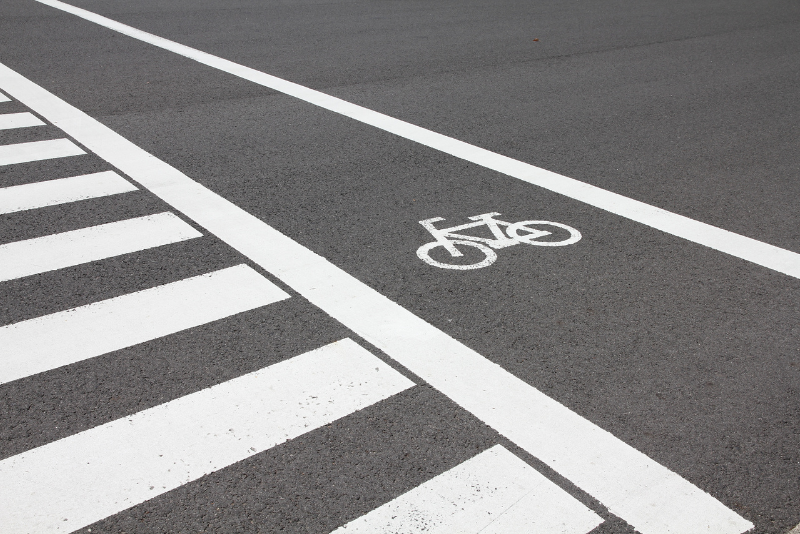Cycling in Japan is a journey of cherry blossom trees and majestic temples. It merges tradition, nature, and refreshing routes, creating a paradise for cyclists from all walks of life.
Cyclists will enjoy Japan’s friendly people and well-maintained roads as they travel across the country. They get to know the sights firsthand and engage with the culture on a more personal level than most tourists.
Whether you are an avid cyclist looking for a challenge or a casual explorer seeking scenic routes, Japan has something for everyone.
In this guide, we will take you through the essentials to make your cycling trip in Japan unforgettable.
Why Cycle in Japan?
Unique Cultural Experiences
Cycling in Japan isn’t just about traversing scenic routes; it’s an immersive cultural journey. Visit ancient temples and shrines, like Kyoto’s Kinkaku-ji or the less touristy but equally awe-inspiring Kompira Shrine. As you pedal, you can participate in local traditions—from tea ceremonies to lantern festivals that will whisk you away to another era.

Cycling during spring is an excellent way to experience cherry blossom season and participate in “hanami” (cherry blossom viewing) as you ride under the pink canopies, a sight straight out of a dream.
Diverse Landscapes and Scenic Routes
One of the most thrilling aspects of cycling in Japan is the variety of landscapes you can explore. Every route offers new scenery, from lush valleys and dramatic coastlines to towering mountains and serene rural Japan.
The Shimanami Kaido, for example, spans six islands in the Seto Inland Sea and offers breathtaking sea views. Another favorite is Biwaichi, a 193-kilometer loop around Lake Biwa. It combines challenging terrain with panoramic lake views.
And who can resist the allure of Mt. Fuji? Cycling routes around this iconic mountain promise awe-inspiring vistas that will make you stop to soak in the splendor.
Welcoming and Safe Environment for Cyclists
Japan is, without a doubt, one of the safest and most welcoming countries for cyclists. The nation prides itself on well-maintained roads and excellent cycling infrastructure. Moreover, Japan’s cycling community is incredibly supportive.
Planning Your Cycling Trip
Best Time to Visit Japan for Cycling
When it comes to timing your trip, spring and autumn are unrivaled. The months from March to May and September to November offer comfortable temperatures, clear skies, and stunning natural scenery. The cherry blossoms are in full bloom in spring, creating a picturesque backdrop for your rides.
The autumn paints the landscape in shades of red and gold, making it equally captivating.
Summer can be hot and humid, and it’s peak tourist season, which might mean crowded roads, especially in popular areas. While quieter, winter is limited to the southern parts of Japan, which are snow-free.
How to Get to Japan
Getting to Japan is straightforward, with major international airports in Tokyo (Narita and Haneda) and Osaka (Kansai). You can use Japan’s efficient train system to reach your starting point. Consider the Japan Rail Pass, which offers unlimited travel on JR trains for a fixed period.
If you don’t bring your bike, renting one is convenient. Many rental shops offer various options, from road bikes to electric-assisted bicycles.
Tips for Planning a Japan Cycling Trip
Planning is crucial for a smooth cycling trip. Start by researching and mapping out your route. Use Google Street View to confirm road conditions and visualize potential routes. Websites and apps like Google Maps are invaluable tools for this.
Always book your accommodations and bike rentals in advance, especially if you’re visiting during peak seasons. Hostels, guesthouses, and ryokans (traditional inns) are often bike-friendly and add a touch of local flavor to your stay.
Packing smartly is another game-changer. Ensure your gear matches the season and terrain. A lightweight rain jacket, layered clothing, and a good-quality helmet are essentials. Also, I recommend learning some basic Japanese phrases and customs. Locals appreciate any effort to speak their language, and this can enhance your interactions.
Essential Cycling Routes in Japan

- Shimanami Kaido: a 70-km scenic route that spans several smaller islands on the Seto Inland Sea. It’s easy to follow, with a blue line guiding cyclists from start to finish. The route offers beautiful views and well-prepared infrastructure.
- Biwa-ichi (Lake Biwa Circuit): This route is approximately 200 km long and circles Japan’s largest lake. It typically takes two to three days to complete and offers stunning views. Cyclists can shorten the route by crossing the Biwako Ohashi Bridge.
- Tokapuchi 400: A 403 km core route in eastern Hokkaido that links the Tokachi Plain in a figure-8 shape. It showcases Hokkaido’s magnificent nature and allows cyclists to enjoy vast landscapes and local cuisine.
- Pacific Cycling Road: This route spans 1,487 km from Choshi City, Chiba Prefecture, to Wakayama City, Wakayama Prefecture. It offers scenic ocean views and access to coastal communities, with notable sights, including Mt. Fuji, a World Heritage Site.
- Tsukuba-Kasumigaura Ring-Ring Road: A route that circles Lake Kasumigaura and includes the Mt. Tsukuba area, providing a mix of lake and mountain scenery.
- Tokyo Western Routes: While not a single designated route, the western regions outside of Tokyo’s dense urban areas offer great cycling opportunities. From places like Takao station, cyclists can enjoy views of Mount Fuji, peaceful forests, and challenging climbs like Wada Pass.
- Hakuba-Kinasa-Lake Aokiko Loop: a 75 km route with a 1,400 m elevation gain featuring three main climbs of roughly 400 m each. The route takes cyclists through the small mountain village of Kinasa, the hamlet of Miasa, and around the scenic Lake Aokiko.
Cycling Route Design and Navigation

Understanding Japanese Traffic Cycles
Navigating Japanese roads requires understanding the unique traffic patterns and rules. Japanese drivers adhere to specific speed limits based on road classifications, impacting cycling route choices. Japan prioritizes safety with clearly marked bike lanes and signs. Shared spaces with pedestrians, known as “Jitendra-dou,” are common and require caution and respect. Speed limits and traffic signals are strictly enforced, so staying alert and following local regulations is essential.
National Roads, Prefectural Roads, and Rindo Forest Roads
Japan’s road classification system is straightforward yet essential for route planning. National roads are significant highways, prefectural roads are regional, and rindo forest roads are scenic but often challenging paths through forests. Choosing the correct type of road depends on your skill level and the experience you’re seeking.
Using Google Maps and Street View for Cycling Route Planning
Technology is a cyclist’s best friend. Google Maps and Street View are invaluable tools for planning your route in Japan. You can visualize road conditions, traffic patterns, and elevation changes, ensuring a safer and more enjoyable trip. Look for bike-friendly routes and avoid busy roads to maximize your adventure.
Practical Information
Cycling Etiquette and Safety in Japan
Japanese cycling culture values respect and safety. Always follow traffic laws and be mindful of pedestrians in shared spaces. Wearing a helmet is highly recommended, even though it’s not legally required for adults. Visibility matters, so wear bright clothing and use lights, especially if riding at dawn or dusk.
Accommodation Options for Cyclists
Accommodations friendly to cyclists range from ryokans and guesthouses to hostels and hotels. Booking in advance is essential, especially during peak seasons. Staying in rural areas often provides a more profound cultural experience and a chance to explore less-trodden paths.
Bike Rental in Japan: Options and Tips
Renting a bike in Japan is hassle-free, with numerous reputable shops and tour operators nationwide. Options range from road bikes to electric-assisted bicycles, so choose one that fits your preferences. Consider renting a bike equipped with panniers or a bike bag for convenient transportation.
Preparing for Your Cycling Trip: Fitness and Language
Preparation is key. Ensure you’re physically ready for the demands of your chosen routes. Regular cycling, combined with strength and conditioning exercises, can help. Additionally, learning basic Japanese phrases and customs goes a long way. Download a translation app and carry a phrasebook for smoother interactions.
Cultural Immersion and Local Experiences

Immerse in Local Flavors and Hospitality
Cycling in Japan is as much about the journey as the destination. River paths offer serene riding experiences away from busy streets, particularly in scenic areas. Take time to savor local cuisines and beverages that reflect Japan’s rich culinary heritage. Onsen hot spring baths are a must-visit, offering relaxation and a glimpse into Japanese bathing culture.
Japanese Culture and Customs
Respecting Japanese culture and customs enriches your experience. Visit temples and shrines, participate in traditional ceremonies, and embrace Japan’s vibrant festivals. It’s an opportunity to deepen your understanding and appreciation of the country’s heritage.
Visiting Temples and Shrines: Etiquette and Tips
Temple and shrine etiquette is simple but essential. Dress modestly, remove your shoes when necessary, and follow local customs. These sites are spiritual havens, and respecting them adds to their serene atmosphere.
Japan Bike Tour: Guided and Self-Guided Options
Benefits of Guided Bike Tours
Opting for a guided bike tour, Japan offers a stress-free experience. Local guides provide insights into Japan’s history and culture while ensuring you have access to bike-friendly facilities and services. This option is ideal for those who prefer a structured itinerary and expert assistance.
Planning a Self-Guided Cycling Tours in Japan
For the adventurous, self-guided tours offer flexibility and self-discovery. Thorough research and route planning are essential. Book accommodations and bike rentals early, and pack appropriately for the season and terrain. Self-guided tours allow you to explore independently, customizing your journey to match your interests.
Additional Resources
JapanCycling.org
For anyone serious about cycling Japan, JapanCycling.org is an invaluable resource:
- Comprehensive Information: It offers detailed information on cycle touring, cycling laws, and advice from fellow cyclists. The community forums are a goldmine of tips and recommendations.
Komoot.com
Planning your cycling journey has never been easier with tools like Komoot.com:
- Mapping Tool: Komoot helps you plan routes, avoid busy roads, and discover scenic paths. It’s beneficial for navigating Japan’s varied landscapes.
Conclusion
Cycling in Japan is an extraordinary adventure that combines the thrill of exploration with deep cultural immersion. From breathtaking landscapes and historic sites to local flavors and customs, every ride unveils new dimensions of this fascinating country. Whether you choose guided tours or embark on self-guided journeys, the memories you create will be unforgettable.
So gear up, map your routes, and embark on an unforgettable cycling trip through Japan, where every pedal stroke will take you deeper into the heart of its beauty and charm.
FAQ
Is Japan suitable for cycling?
Yes, Japan is suitable for cycling. With a well-maintained road network and various cycling routes catering to different skill levels, Japan offers cyclists a safe and enjoyable experience.
Can I cycle around Japan?
Yes, you can cycle around Japan. With efficient public transportation systems and bike-friendly policies, traveling across Japan by bike is possible. However, planning your route and being aware of the different road regulations in each prefecture is recommended. A JR Pass may be worth your while.
What are the best times of the year for cycling in Japan?
The best times for cycling in Japan are spring (March-May) and autumn (September-November). The weather is mild, and the landscapes are stunning, with cherry blossoms or autumn foliage. However, summer can also be an enjoyable time for cycling with its warm temperatures and lively festivals. Winter may pose challenges due to colder temperatures and snow in certain areas.
What is the most beautiful bike ride in Japan?
Japan has many beautiful bike rides, each offering unique landscapes and experiences. Some popular routes include the Shimanami Kaido in Hiroshima, the Noto Peninsula in Ishikawa, and Lake Biwa in Shiga prefecture. Determining the most beautiful ride is difficult as it is subjective to personal preferences. We recommend researching different routes and choosing one that aligns with your interests and skill level. So hop on a bike and discover your favorite bike ride in Japan!
Hi, welcome to Events Hakuba. I started this site about eight years ago with a friend (who’s since moved away) to help travelers get more out of their time in Hakuba. What began as an event calendar has grown into a resource for everything from logistics to local insights.
It’s a one-person operation, and while I do my best to keep things current, it’s not a full-time gig—so thanks for your patience if anything’s slightly out of date.
If you’re curious about my main work, I run The Fifth Business — helping independent hotels scale guest revenue, retention, and operations without adding complexity.







